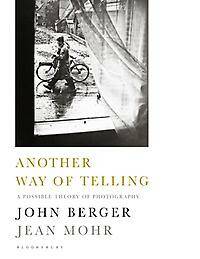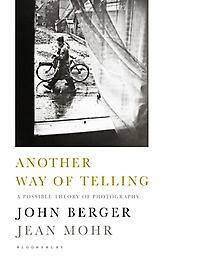
- Afhalen na 1 uur in een winkel met voorraad
- Gratis thuislevering in België vanaf € 30
- Ruim aanbod met 7 miljoen producten
- Afhalen na 1 uur in een winkel met voorraad
- Gratis thuislevering in België vanaf € 30
- Ruim aanbod met 7 miljoen producten
Zoeken
€ 34,95
+ 69 punten
Omschrijving
In one of the most eloquent accounts of photography ever devised (originally published in 1982 and unavailable for many years), the writer John Berger and the photographer Jean Mohr set out to understand the fundamental nature of photography and how it makes its impact.
Asking a range of questions - What is a photograph? What do photographs mean? How can they be used? - they give their answers in terms of a photograph as 'a meeting place where the interests of the photographer, the photographed, the viewer and those who are using the photography are often contradictory'. From these beginnings they develop a theory of photography that has at its centre the form's essential ambiguity, arguing that photography is totally unlike a film and has nothing to do with reportage. Rather, it constitutes 'another way of telling'.
The unique combination of critic and photographer results in a work that moves beyond the landmarks established by Walter Benjamin, Roland Barthes and Susan Sontag to establish a new theory of photography.
Asking a range of questions - What is a photograph? What do photographs mean? How can they be used? - they give their answers in terms of a photograph as 'a meeting place where the interests of the photographer, the photographed, the viewer and those who are using the photography are often contradictory'. From these beginnings they develop a theory of photography that has at its centre the form's essential ambiguity, arguing that photography is totally unlike a film and has nothing to do with reportage. Rather, it constitutes 'another way of telling'.
The unique combination of critic and photographer results in a work that moves beyond the landmarks established by Walter Benjamin, Roland Barthes and Susan Sontag to establish a new theory of photography.
Specificaties
Betrokkenen
- Auteur(s):
- Uitgeverij:
Inhoud
- Aantal bladzijden:
- 304
- Taal:
- Engels
Eigenschappen
- Productcode (EAN):
- 9781408864456
- Verschijningsdatum:
- 10/03/2016
- Uitvoering:
- Paperback
- Afmetingen:
- 153 mm x 198 mm
- Gewicht:
- 600 g

Alleen bij Standaard Boekhandel
+ 69 punten op je klantenkaart van Standaard Boekhandel
Beoordelingen
We publiceren alleen reviews die voldoen aan de voorwaarden voor reviews. Bekijk onze voorwaarden voor reviews.











